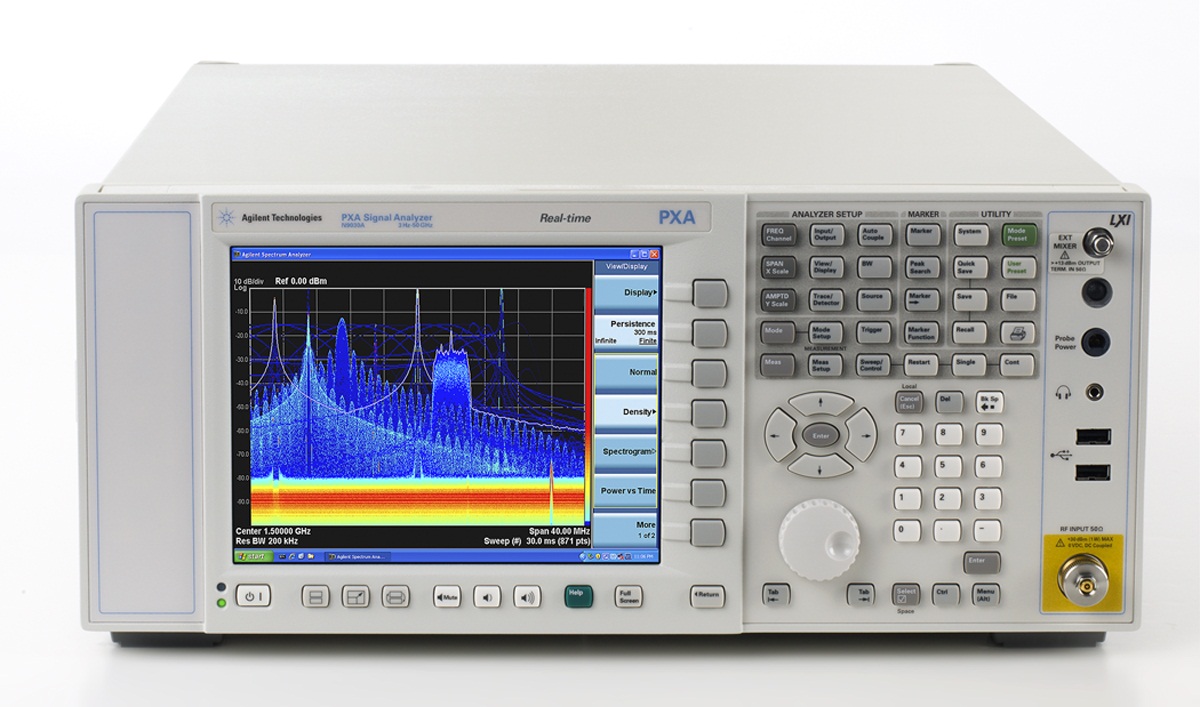Many different technologies fall under RF/Microwave and there are different types of products in this area. Linear Technology and Agilent Technologies are two companies with different types of RF/Microwave products so I asked them their views on the following two questions:
1. What are the most important RF/Microwave trends today?
Mr. James Wong, Product Marketing Manager of RF Products, says: “We believe the most significant standout today is the trend toward HetNet, that is, small microcell basestations that can be quickly and easily deployed to provide augmentation coverage into areas that macro-cells cannot reach due to building obstructions, fringe or signal losses inside a structure. Such HetNet microcells also provide a cost-effective way for carriers to boost call capacity into an under-served or high call density area.
“These microcells typically broadcast much lower RF transmission power, in the range of
“We do not believe the microcell will completely replace the macrocell architecture. Rather, both will complement each other, providing mutual support for a much more robust network coverage.
“A cautionary note however, is that such microcells are subject to a large amount of interference from other cellular towers, cellular phones, wireless devices, broadcast station radios, and police band public safety radios. These interference environments are progressively getting worse, particularly acute in high-density areas. The need for making these microcells more robust to mitigate such interference is critical to providing successful uninterrupted service. “
Ms. Lynne Stewart, Marketing Program Manager at Agilent Technologies, focused on solution for the RF/MW workflow. “The trend in the commercial wireless space is the same as it has been for well over a decade, but at an accelerated pace. Consumers want always-on access, dependable connectivity, long battery life, at lowest cost for their smart mobile devices. And there is an increasing demand for video streaming adding to the data throughput need with high-speed in-home WLAN access and wireless connectivity between audio/video components.
“This clearly translates into the needs for developers of components, devices, and systems for emerging standards such as LTE-Advanced, 802.11ac and 802.11ad: deepening integration of RF, microwave, and high-speed digital technologies. It is driving new developments in four major areas: faster chipsets, buses, memory; multiple radios that use multiple standards; new antenna techniques; and low power consumption.
“Design and test tools with scalable performance, essential capabilities, and working in harmony are critical to help developers meet their schedules. System and component design, test signal generation, waveform characterization, signal-, logic- and protocol-analysis are needed to address numerous communications formats and architectures. Higher-order MIMO, beamforming, digital pre-distortion, multi-standard radios, and operation in heterogeneous networks are examples of challenges faced by developers today.”
2. What RF/Microwave technology do you see taking the consumer space by end of year and why?
Ms. Stewart comments, “We believe that certain features of LTE-Advanced will be under full testing and in use by some. 802.11ac will be deployed by major players, and 802.11ad will see more and more use. These technologies meet critical needs and will be working together to achieve the high throughput and capacity demanded by growing consumer and business (M2M) applications. Agilent is working side by side with standards bodies and developers to ensure we provide design and test tools to help developers turn ideas into products quickly and reliably now, in anticipation of consumer reality in the near future.”
Mr. Wong adds here, “2013 will likely be the year in which the global LTE network deployment goes in full swing to support the massive adoption rate of LTE-enabled smart phones and mobile devices. Barring the U.S., major European countries and China from skitting into a severe downturn, most major developed countries' economy will likely enjoy decent growth, albeit sluggish and slow. But as long as there is sustainable global economic strength, it could very well support an expanded buildout of the LTE network beyond the developed economies into developing countries, and further accelerate the sales of broadband enabled phones and mobile tablets everywhere. Mobile commerce and social media are clearly driving the wireless eco-system.”

With an operating frequency of 300 MHz to 4 GHz, the LTC5567 downconverting mixer achieves 26.9-dBm IIP3 while consuming just 294 mW. It offers a wide IF frequency range of 5 to 2,500 MHz to support 4G wireless base stations and a wide range of high dynamic range receiver applications. Additional features include a supply voltage of 3.3 V, a current consumption of 89 mA, a conversion gain of 1.9 dB, a noise figure of 11.8 dB, and a noise figure with 5-dBm blocking of 16.5 dB. RF balun transformers are integrated on-chip at the RF and LO inputs.

Agilent recently announced the industry's highest-performance real-time spectrum analysis (RTSA) for its PXA X-series signal analyzers. They claim it delivers unmatched probability of intercept (POI), analysis bandwidth, sensitivity, and frequency range-capabilities that make it the best way for system developers and signal analysts to see, capture and understand highly elusive signals. When configured for real-time spectrum analysis, the PXA can detect intermittent signals with durations as short as 3.57 µs, which is the best POI currently available. Agilent's real-time PXA provides an industry-leading 75-dB spurious-free dynamic range across analysis bandwidths of up to 160 MHz.
Advertisement
Learn more about Electronic Products Magazine





